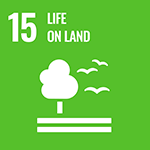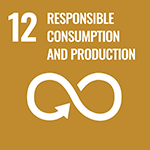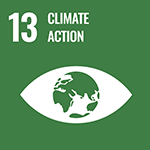Wild Fire and Carbon Management in Peat-forest in Indonesia
Principal Investigator
ODA Recipient Country
Republic of Indonesia
Research Institutions in Japan
Hokkaido University
Research Institutions in Counterpart Country
National Standardization Agency of Indonesia (BSN) / University of PalangkaRaya (UNPAR) / Indonesian Institute of Sciences (LIPI) / State Ministry of Research and Technology (RISTEK) / Indonesian National Institute of Aeronautics and Space (LAPAN) / Forest Research and Development Agency (FORDA) / Agency for the Assessment and Application of Technology (BPPT)
Adoption fiscal year
FY 2008
Research Period
5 Years
Overview of the Research Project
The peat accumulated beneath a tropical peatland including forest could be ignited and burn down the forest
Enormous quantities of carbon are stored in peatlands in the low marsh areas of Indonesia. If drainage channels are dug in the peat and the deposits of vegetation dry out, both hot combustion (peat fires) and cold combustion (microbial decomposition) occur, releasing large quantities of carbon into the atmosphere and resulting in a loss of the biodiversity. Moreover, the carbon monoxide and fine particles released would threaten the health of residents. This project aims to develop water management appropriate for the region, restore the forests, create an early fire detection system using satellites, and establish measures for rapidly extinguishing fires ─ all measures that are needed to restore these peat marshes. The data will be integrated with satellite GIS data to build carbon flux models that will contribute to creating REDD-plus* and MRV** standards.
* REDD-plus: Reducing Emissions from Deforestation and forest Degradation and plus for the role of conservation, sustainable management of forests and enhancement of forest carbon stocks in developing countries
** MRV: Measurement, Reporting, and Verification
Building a system for comprehensive management of peatland, inhibition of carbon release and carbon management
The world’s only MRV system capable of accurately determining carbon emissions from peatland was created by integrating ground and satellite data. This system will be used with REDD-plus to restore and maintain the tropical peatland including forests that are the earth’s most important carbon sinks and treasure troves of biodiversity.
Photo gallery

Trees selected by means of water resistance tests conducted to determine the tree species suitable for wetlands
Research Project Web site
Press Release
Links
Projects
Contact Us
Japan Science and Technology Agency (JST)
Department of International Affairs
SATREPS Group
TEL : +81-3-5214-8085
Related articles by Category
- Climate Change
Environment / Energy
(Climate Change)
 Federative Republic of Brazil
Federative Republic of Brazil
Health Checkup for the World’s Lungs: Measuring the Carbon Stocks in the Amazon Forests
Carbon Dynamics of Amazonian Forests
- Indonesia
Environment / Energy
(Carbon Neutrality)
 Republic of Indonesia
Republic of Indonesia
Creating a new chemical industry linked to Indonesian agriculture!
Development of Integrated Bio-circular Economy from Food and Energy Estate Waste Fraction to Biofuel and Bio-chemicals
- Asia
Environment / Energy
(Carbon Neutrality)
 Socialist Republic of Vietnam
Socialist Republic of Vietnam
Regenerating cassava farm land by storing carbon in the soil!
Transforming the Cassava Production System in Vietnam by Establishing Regenerative Farming and Smart Starch Supply Chain Management
- SDGs : Goal.15
Environment / Energy
(Global-scale environmental issues)
 Republic of Peru
Republic of Peru
Solve the challenges facing the Andean-Amazon region by sustainable forest management
Establishment of Integrated Forest Management System Model for Conservation of Mountain Forest Ecosystems in the Andean-Amazon






















